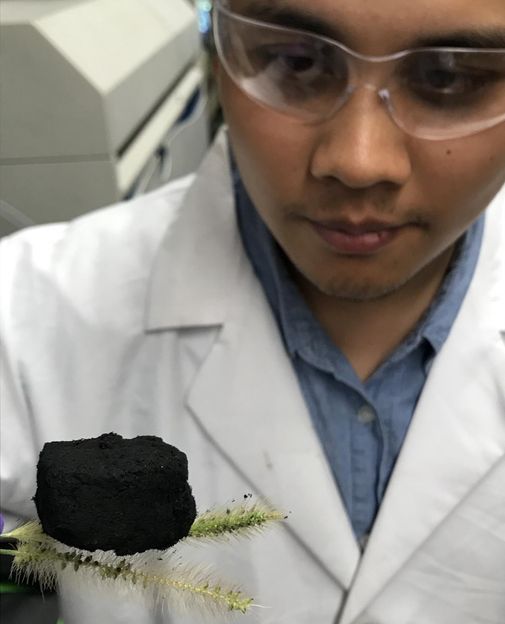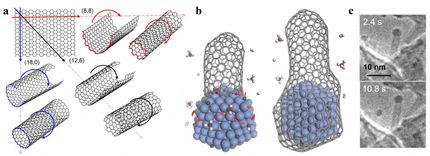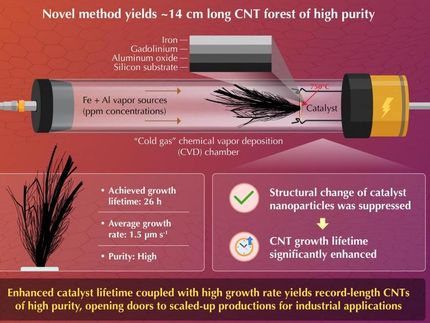Nanomaterial safety on a nano budget
Rice University researchers share their protocol for handling carbon nanotubes
With a little practice, it doesn't take much more than 10 minutes, a couple of bags and a big bucket to keep nanomaterials in their place.
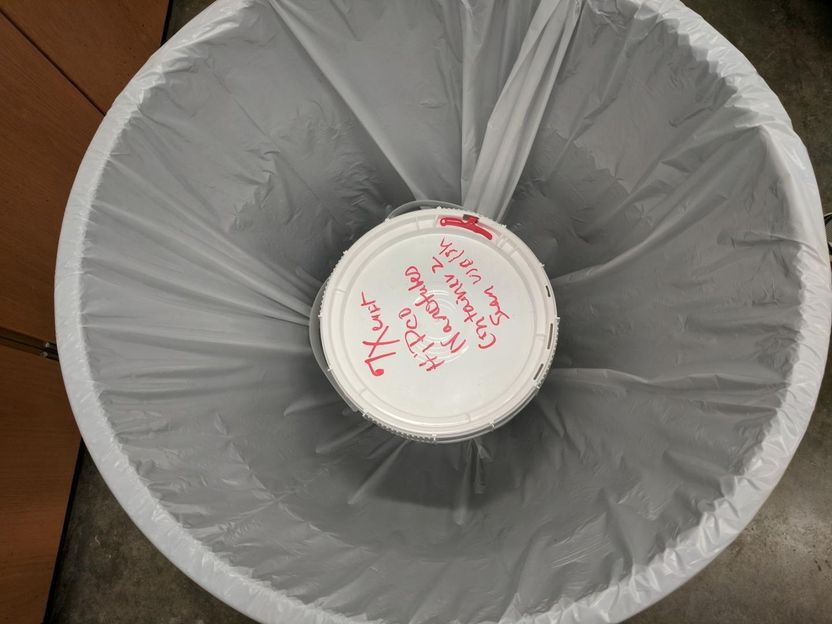
A plastic bucket and a plastic bag contain a 5-gallon supply of carbon nanotubes in a lab at Rice University, the beginning of the process to safely transfer the nanotubes for experimental use. The Rice lab published its technique in SN Applied Sciences.
Barron Research Group/Rice University
The Rice University lab of chemist Andrew Barron works with bulk carbon nanotubes on a variety of projects. Years ago, members of the lab became concerned that nanotubes could escape into the air, and developed a cheap and clean method to keep them contained as they were transferred from large containers into jars for experimental use.
More recently Barron himself became concerned that too few labs around the world were employing best practices to handle nanomaterials. He decided to share what his Rice team had learned.
"There was a series of studies that said if you're going to handle nanotubes, you really need to use safety protocols," Barron said. "Then I saw a study that said many labs didn't use any form of hood or containment system. In the U.S., it was really bad, and in Asia it was even worse. But there are a significant number of labs scaling up to use these materials at the kilogram scale without taking the proper precautions."
The lab's inexpensive method is detailed in an open-access paper in the Springer Nature journal SN Applied Sciences.
In bulk form, carbon nanotubes are fluffy and disperse easily if disturbed. The Rice lab typically stores the tubes in 5-gallon plastic buckets, and simply opening the lid is enough to send them flying because of their low density.
Varun Shenoy Gangoli, a research scientist in Barron's lab, and Pavan Raja, a scientist with Rice's Nanotechnology-Enabled Water Treatment center, developed for their own use a method that involves protecting the worker and sequestering loose tubes when removing smaller amounts of the material for use in experiments.
Full details are available in the paper, but the precautions include making sure workers are properly attired with long pants, long sleeves, lab coats, full goggles and face masks, along with two pairs of gloves duct-taped to the lab coat sleeves. The improvised glove bag involves a 25-gallon trash bin with a plastic bag taped to the rim. The unopened storage container is placed inside, and then the bin is covered with another transparent trash bag, with small holes cut in the top for access.
After transferring the nanotubes, acetone wipes are used to clean the gloves and more acetone is sprayed inside the barrel so settling nanotubes would stick to the surfaces. These can be recovered and returned to the storage container.
Barron said it took lab members time to learn to use the protocol efficiently, "but now they can get their samples in 5 to 10 minutes." He's sure other labs can and will enhance the technique for their own circumstances. He noted a poster presented at the Ninth Guadalupe Workshop on the proper handling of carbon nanotubes earned recognition and discussion among the world's premier researchers in the field, noting the importance of the work for agencies in general.
"When we decided to write about this, we were originally just going to put it on the web and hope somebody would read it occasionally," Barron said. "We couldn't imagine who would publish it, but we heard that an editor at Springer Nature was really keen to have published articles like this.
"I think this is something people will use," he said. "There's nothing outrageous but it helps everybody, from high schools and colleges that are starting to use nanoparticles for experiments to small companies. That was the goal: Let's provide a process that doesn't cost thousands of dollars to install and allows you to transfer nanomaterials safely and on a large scale. Finally, publish said work in an open-access journal to maximize the reach across the globe."
Most read news
Other news from the department science

Get the chemical industry in your inbox
By submitting this form you agree that LUMITOS AG will send you the newsletter(s) selected above by email. Your data will not be passed on to third parties. Your data will be stored and processed in accordance with our data protection regulations. LUMITOS may contact you by email for the purpose of advertising or market and opinion surveys. You can revoke your consent at any time without giving reasons to LUMITOS AG, Ernst-Augustin-Str. 2, 12489 Berlin, Germany or by e-mail at revoke@lumitos.com with effect for the future. In addition, each email contains a link to unsubscribe from the corresponding newsletter.
Most read news
More news from our other portals
Last viewed contents
Ferroelectric Memory Company receives growth financing from eCAPITAL and HTGF
BINDER GmbH invests in the Tuttlingen site
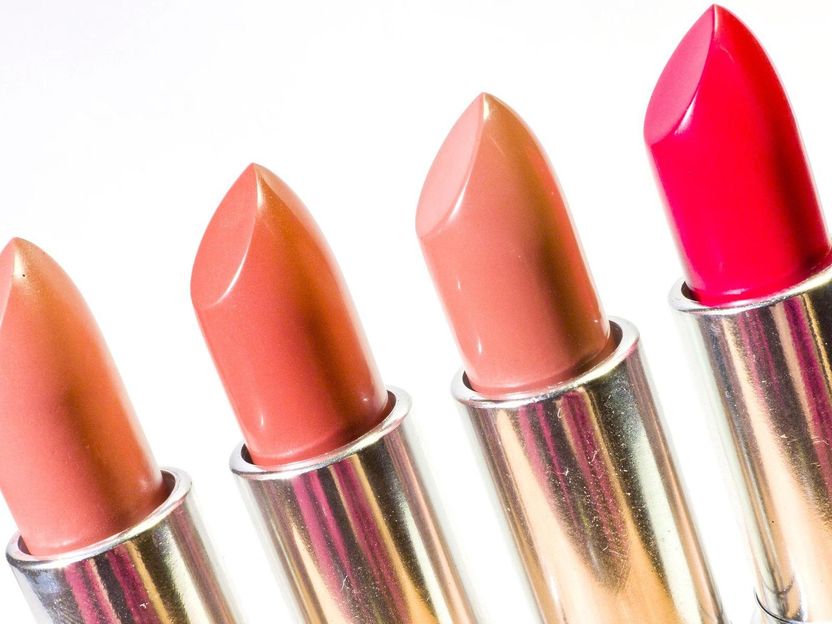
Spin-out company aiming to replace harmful plastic microbeads receives £1.3M investment - Sustainable cellulose start-up Naturbeads is poised to scale up
China develops world's brightest VUV free electron laser research facility
Purac joins BE-Basic consortium for bio-based economy

W. Dimer GmbH - Laufenburg, Germany
Hard Times Ahead Forces Companies to Focus on Innovative Solutions
Applied Biosystems/MDS Sciex is the Top Supplier in the Mass Spectrometer Market
